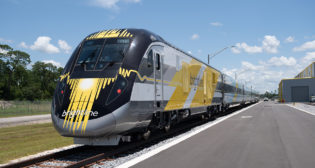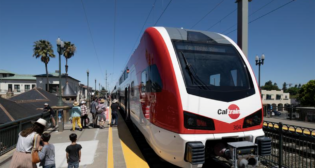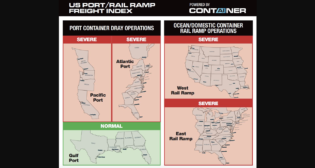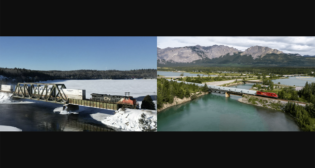
Hiatus in CBR mishaps ends with triplet of derailments
Written by David Thomas, Canadian Contributing EditorThat essential detail remains publicly unknown for both CN’s seven-car blaze late Saturday in a roadless area of northern Ontario and Monday’s reported chain reaction of fireballs from a derailed CSX oil train in West Virginia. Reporters are so far unable to approach the West Virginia conflagration near the portentously named village of Boomer Bottom.
If the breached and exploding tank cars in Ontario and West Virginia were of the obsolete DOT-111 variety, then these two events are business as usual in the succession of oil train disasters that began in July 2013 at Lac-Mégantic, Quebec.
If, on the other hand, the stricken tank cars in Ontario and West Virginia are modern CPC-1232 designs, then it’s back to the drawing board, not for carbuilders, but for federal authorities in both countries who have blithely placed their faith in car technology and rigid operating rules to bring an end to the oil train disasters.
Both countries continue to allow Bakken crude from North Dakota and neighboring Canadian provinces to be loaded into tank cars without prior treatment to remove explosive gases. Such treatment is routine in Texas, but not in the Bakken region because oil producers say there is no accessible market for the extracted gases. Better, they say, to ship the mix to refiners for separation.
The necessary but insufficient focus on tank car construction and train operations has distracted public and official attention from the greater root cause of unnecessarily explosive lading.
Even the best tank cars are limited in their resistance to high-energy events. The proposed future DOT-117 now under final review by the U.S. Office of Management and Budget is very close to the CPC-1232 design voluntarily adopted since 2011 by a consortium of tank car builders, shippers, and haulers in the absence of initiative by the Federal Railroad Administration. Tank car builders have warned that no car can be engineered to withstand the forces of high-speed, multiple-car pileups.
The third, much smaller incident in southern Alberta was an encouraging real-world trial of the CPC-1232—in the low-energy events for which it is designed.
In the Canadian Pacific mishap, a train carrying light crude from Western Canada jumped the tracks in the midst of a rocky area. Twelve CPC-1232 tank cars derailed, two of them toppling into the debris field and coming to rest on their sides. No crude leaked from the two tank cars, which were up-righted and emptied of their lading into three rescue tankers. On-site supervisors said a broken rail was responsible. The short distance between the point of failure and the rolled tank cars indicates the train was moving at considerably less than the 40 mph limit.
The CPC-1232 car is designed to contain its lading in relatively slow-speed derailments and rollovers. As the Crowsnest Pass event indicates, they work as designed in low-energy incidents. Carbuilders themselves advise that neither the CPC-1232 nor its yet-to-be-designated official successor could withstand the forces of high-speed derailments or collisions.



